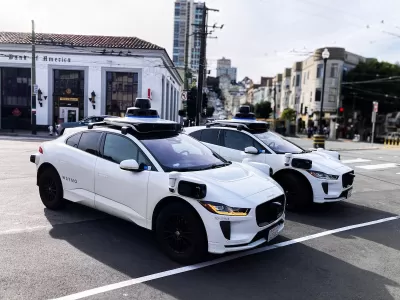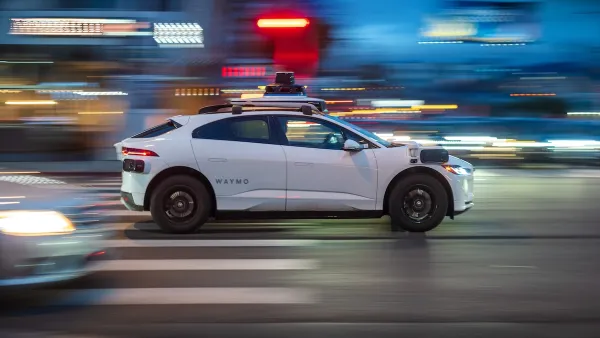Robotaxis can lead to longer, more frequent trips and are projected to increase VMT by as much as 83 percent.

The rise of autonomous cars could have numerous downstream effects, writes Jeral Poskey in an opinion piece in Smart Cities Dive.
Poskey points out several ways that robotaxis could be counterproductive to climate goals. First, robotaxis could induce more travel due to their visible upsides like convenience and the reduced financial burden. In the same vein, autonomous cars could encourage longer commutes, making people less averse to long commutes since they don’t have to drive themselves. Robotaxis also create more empty trips as cars circle around passenger-less, waiting for fares.
All told, with more frequent trips, longer commutes and more empty trips, a University of California-Berkeley study calculated robotaxis could increase total VMT by a whopping 83%, nearly double today’s levels.
An MIT study warned that these factors could lead to more sprawl as people find it easier to live farther from their jobs. “s destinations grow farther apart, more infrastructure, such as roads and parking, is needed. This, in turn, pushes destinations even farther apart, creating a spiral of sprawl that becomes self-perpetuating.”
Poskey advises that planners should think about how to build “better cities, not better cars.” Whether or not cars have human drivers, urban design and planning can guide development that is more sustainable and less car-dependent.
FULL STORY: The unseen environmental costs of autonomous cars

Planetizen Federal Action Tracker
A weekly monitor of how Trump’s orders and actions are impacting planners and planning in America.

Chicago’s Ghost Rails
Just beneath the surface of the modern city lie the remnants of its expansive early 20th-century streetcar system.

Amtrak Cutting Jobs, Funding to High-Speed Rail
The agency plans to cut 10 percent of its workforce and has confirmed it will not fund new high-speed rail projects.

Silicon Valley ‘Bike Superhighway’ Awarded $14M State Grant
A Caltrans grant brings the 10-mile Central Bikeway project connecting Santa Clara and East San Jose closer to fruition.

Mexico City Anti-Gentrification Plan Aims to Half Housing Deficit
The plan comes in response to protests that targeted ‘digital nomads’ who locals blame for driving up housing costs.

Chicago Has Quietly Built Hundreds of Neighborhood Traffic Circles
Thanks largely to one alderperson’s efforts, the city has made mini-roundabouts a key piece of its road safety strategy.
Urban Design for Planners 1: Software Tools
This six-course series explores essential urban design concepts using open source software and equips planners with the tools they need to participate fully in the urban design process.
Planning for Universal Design
Learn the tools for implementing Universal Design in planning regulations.
City of Fort Worth
planning NEXT
Mpact (founded as Rail~Volution)
City of Camden Redevelopment Agency
City of Astoria
City of Portland
City of Laramie





























